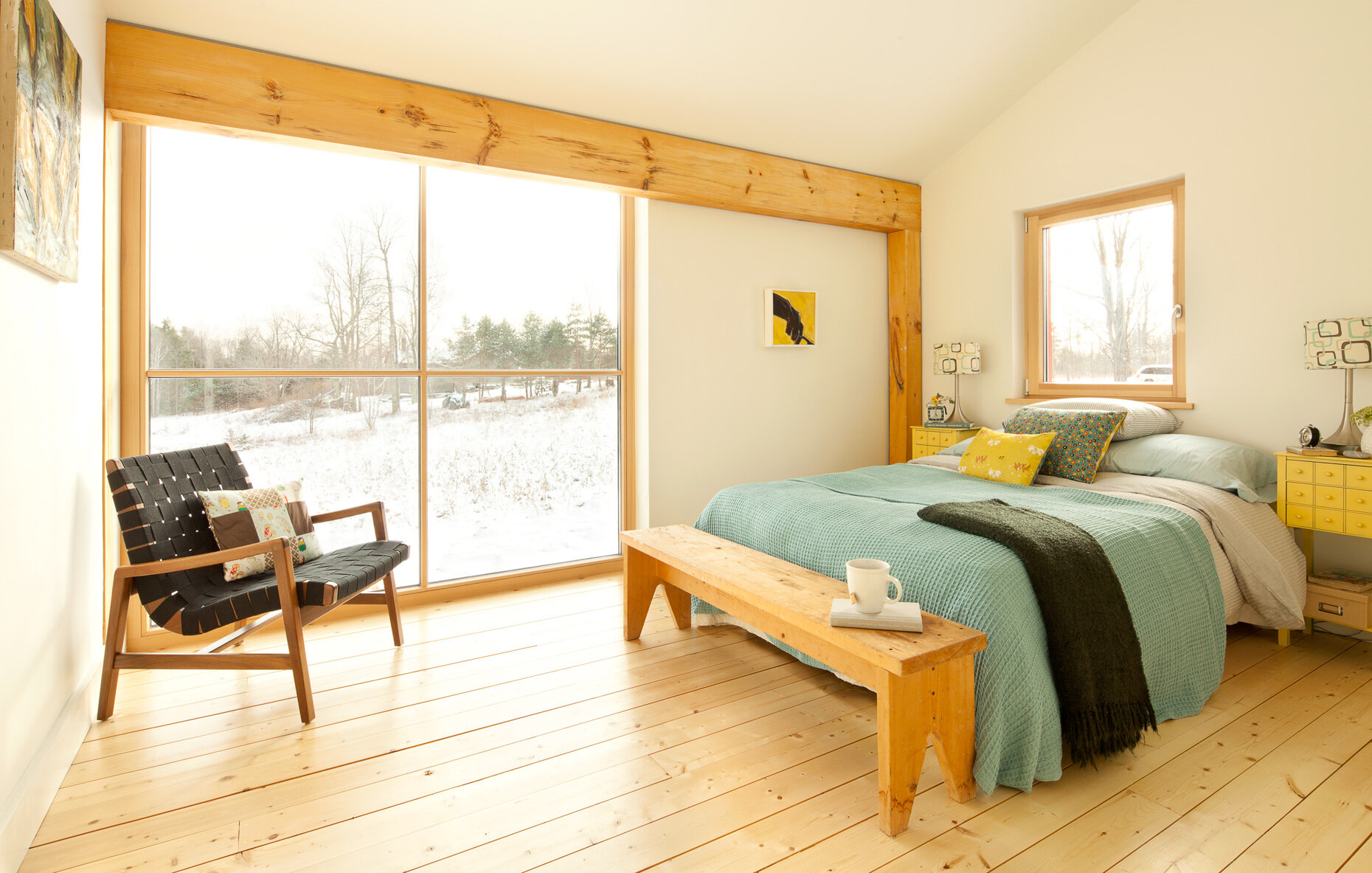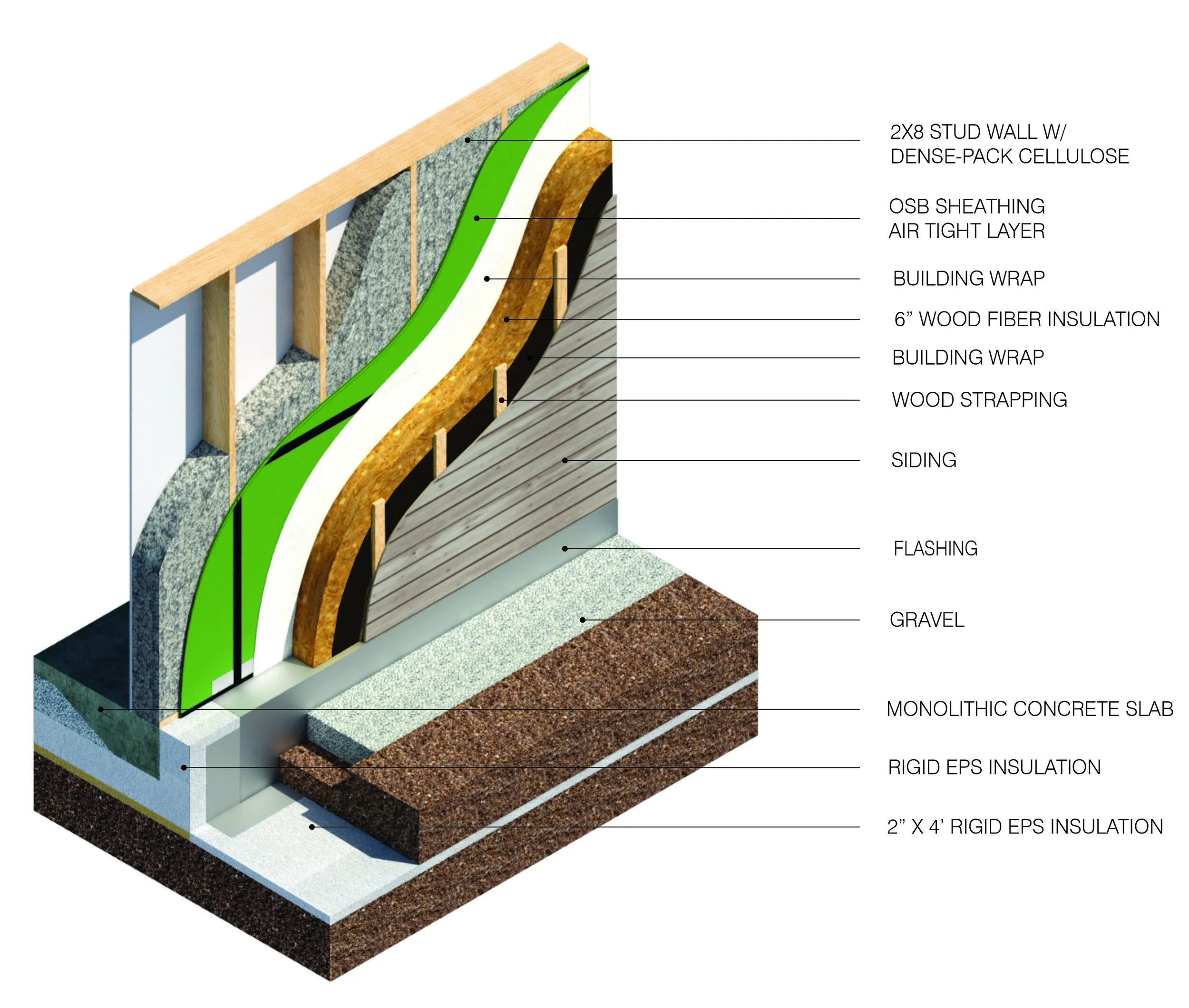
PASSIVE HOUSE
THE CHALLENGE TO BUILD BETTER
When you boil it all the way down, a building is just a box, with bad weather on the outside and good weather on the inside. It’s been that way since our Paleolithic ancestors first got into the construction business. Their primary objective was survival, but over the eons the focus shifted more and more to comfort: staying warm and dry when it’s cold and wet outside; keeping cool when it’s too hot out there.
Those of us who make buildings are still concerned with comfort. But survival is back on the agenda, partly because of the way we’ve long chosen to improve the indoor weather: by burning fossil fuels to make heat and electricity. Buildings are responsible for 40 percent of the carbon emissions that are destabilizing our climate and putting the future of civilization at risk.
Standard construction practices have improved in recent years, but we need to pick up the pace. World population is on track to grow from 7 billion today to 9 billion in 2050—all of us sharing the same finite resources, most living and working in buildings, and everyone wanting to be comfortable. To accomplish that, we’ll need buildings that use dramatically less energy—or none at all. And because the buildings we create today will be in service long after 2050, we’ll have to start building that way now.
THE GOOD NEWS: WE KNOW HOW TO DO IT
At GO Logic, we follow the Passive House approach: We create an airtight building shell superinsulated to R35 at the foundation, R50 at the walls, and R80 at the roof. We specify ultra-high-performance windows and doors and locate them where they’ll collect free heat from the sun. And we install a heat-recovery ventilation system that delivers a constant flow of fresh air while capturing 80 percent of the heat in the air it exhausts to the outdoors. Our houses use 10 percent of the energy consumed by a conventional code-compliant house, while offering a healthier, more comfortable living environment.
Passive House design allocates resources differently from conventional construction—investing more in the building shell and less in mechanical equipment—but it need not cost more up front, and it yields a positive return over the life of the building. A single-family home built this way can be heated on the coldest winter day with the equivalent of a hairdryer. That translates to smaller, less expensive heating and cooling systems, and lower operating costs.
ABOVE AND BEYOND
And while Passive House principles underlie everything we do, we’re always looking for ways to improve on how we put them into practice. We pioneered factory prefabrication of Passive House building components—and entire buildings. We’ve developed and patented economical systems for building superinsulated foundations and wall assemblies. We import triple-glazed German windows that outperform any made in North America. We’re constantly refining our systems for low maintenance and durability, further reducing life-cycle costs.
The result is a house that performs at the highest level—predictably, dependably, and cost-effectively. GO Logic has designed and built 112,000 square feet of buildings that perform at least ten times better than required by code. It’s the only way we build. Given everything we know, it’s the only way that makes sense.



